A Very Rare Roman Period Jewish Lead Roundel
A Very Rare Roman Period Jewish Lead Roundel from a Sarcophagus Depicting a Menorah Surrounded by Vines in High Relief with Two Bunches of Grapes
Holy Lands
2nd Century B.C to 2nd Century A.D
Size: 22cm dia. (max) approx: 1cm deep - 8¾ ins dia. (max) approx: ³⁄₈ ins deep / 23.5cm high - 9¼ ins high (with base)
cf An analysis report of the lead carried out by, CEZA and Prof. Dr. Ernst Pernicka, Germany, sample receipt, 26, January 2021, report date, 10th March 2021 is available confirming the dating of the lead relief
Holy Lands
2nd Century B.C to 2nd Century A.D
Size: 22cm dia. (max) approx: 1cm deep - 8¾ ins dia. (max) approx: ³⁄₈ ins deep / 23.5cm high - 9¼ ins high (with base)
cf An analysis report of the lead carried out by, CEZA and Prof. Dr. Ernst Pernicka, Germany, sample receipt, 26, January 2021, report date, 10th March 2021 is available confirming the dating of the lead relief
A Very Rare Roman Period Jewish Lead Roundel from a Sarcophagus Depicting a Menorah Surrounded by Vines in High Relief with Two Bunches of Grapes
Holy Lands
2nd Century B.C to 2nd Century A.D
Size: 22cm dia. (max) approx: 1cm deep - 8¾ ins dia. (max) approx: ³⁄₈ ins deep / 23.5cm high - 9¼ ins high (with base)
cf An analysis report of the lead carried out by, CEZA and Prof. Dr. Ernst Pernicka, Germany, sample receipt, 26, January 2021, report date, 10th March 2021 is available confirming the dating of the lead relief
Holy Lands
2nd Century B.C to 2nd Century A.D
Size: 22cm dia. (max) approx: 1cm deep - 8¾ ins dia. (max) approx: ³⁄₈ ins deep / 23.5cm high - 9¼ ins high (with base)
cf An analysis report of the lead carried out by, CEZA and Prof. Dr. Ernst Pernicka, Germany, sample receipt, 26, January 2021, report date, 10th March 2021 is available confirming the dating of the lead relief
The menorah is described in the Bible as the seven-lamp (six branches) ancient Hebrew lamp-stand made of pure gold and used in the tabernacle set up by Moses in the wilderness and later in the Temple in Jerusalem. Fresh olive oil was burned daily to light its lamps. The menorah is a symbol of both Judaism and Christianity since antiquity.
The menorah from the Second Temple was carried to Rome after the Roman conquest of Jerusalem in 70 A.D during the first Jewish-Roman war. The fate of the menorah used in the Second Temple is recorded by Josephus, who states that it was brought to Rome and carried along during the triumph of Vespasian and Titus. The bas relief on the Arch of Titus in Rome depicts a scene of Roman soldiers carrying away the spoils of the Second Temple, including the menorah.
Lead coffins were common in the Land of Israel in the 3rd to 4th Century, being a less expensive alternative to stone or marble coffins. They were produced using a special casting mould into which hot lead was poured. Often the workshops that made these coffins served people of all faiths, with clients selecting symbols appropriate to their faith.
A Jewish coffin ‘Beth She′arim’ of the early Byzantine period (IAA: 1964 - 40) illustrates the use of vine branches, leaves, vases and birds as a standard design, embellished further at the request of the purchaser, with Jewish symbols of the menorah, incense shovel and the ‘four species’.
The menorah is surmounted by two bunches of grapes. One of the oldest symbols of the Jewish faith, the menorah is used to light the Temple that is today closely identified with the Jewish holiday of Chanukah. Historically grapes were one of the most important products of Israel, grown both to eat as well as to make wine. Wine was often used in the ceremonial occasions and grapes offered at the altar. The vine and grapes are a symbol of fertility and blessing from God. The iconography of this sarcophagus clearly identifies the deceased individual who was once held within its confines as a pious Jew who was blessed by God in life, as he no doubt was also in death.
The menorah from the Second Temple was carried to Rome after the Roman conquest of Jerusalem in 70 A.D during the first Jewish-Roman war. The fate of the menorah used in the Second Temple is recorded by Josephus, who states that it was brought to Rome and carried along during the triumph of Vespasian and Titus. The bas relief on the Arch of Titus in Rome depicts a scene of Roman soldiers carrying away the spoils of the Second Temple, including the menorah.
Lead coffins were common in the Land of Israel in the 3rd to 4th Century, being a less expensive alternative to stone or marble coffins. They were produced using a special casting mould into which hot lead was poured. Often the workshops that made these coffins served people of all faiths, with clients selecting symbols appropriate to their faith.
A Jewish coffin ‘Beth She′arim’ of the early Byzantine period (IAA: 1964 - 40) illustrates the use of vine branches, leaves, vases and birds as a standard design, embellished further at the request of the purchaser, with Jewish symbols of the menorah, incense shovel and the ‘four species’.
The menorah is surmounted by two bunches of grapes. One of the oldest symbols of the Jewish faith, the menorah is used to light the Temple that is today closely identified with the Jewish holiday of Chanukah. Historically grapes were one of the most important products of Israel, grown both to eat as well as to make wine. Wine was often used in the ceremonial occasions and grapes offered at the altar. The vine and grapes are a symbol of fertility and blessing from God. The iconography of this sarcophagus clearly identifies the deceased individual who was once held within its confines as a pious Jew who was blessed by God in life, as he no doubt was also in death.
Ex Private English collection believed to have been in the same family since the 1950’s
Thence by descent
Sold at auction 2020
Thence by descent
Sold at auction 2020
A Very Rare Roman Period Jewish Lead Roundel
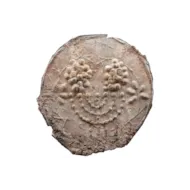
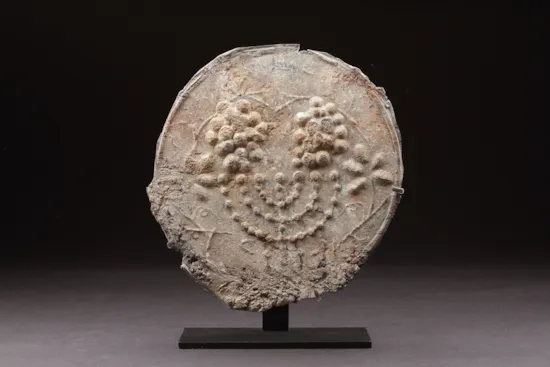
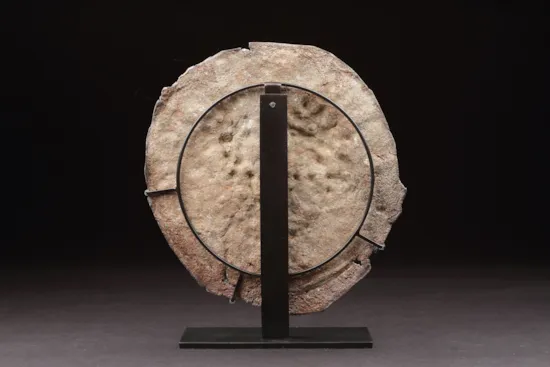

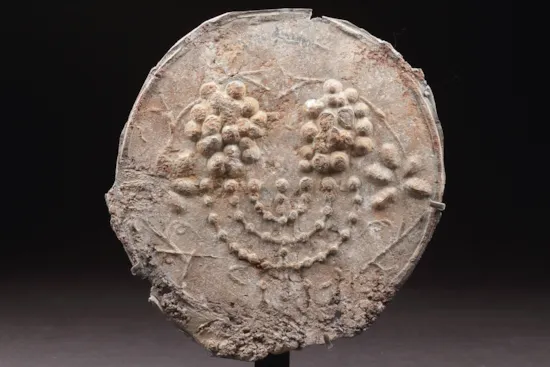
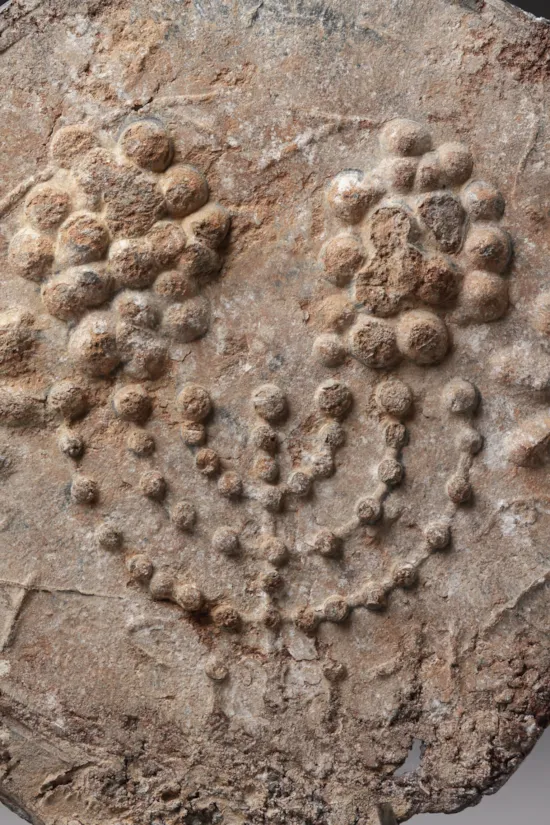
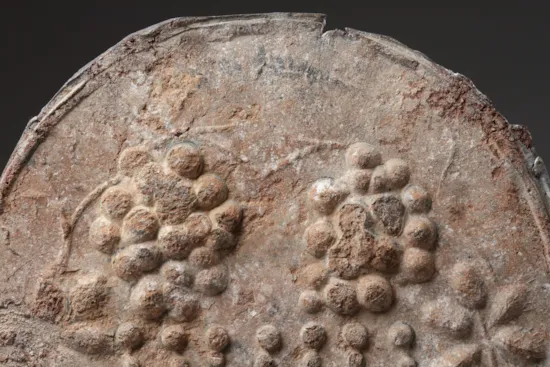
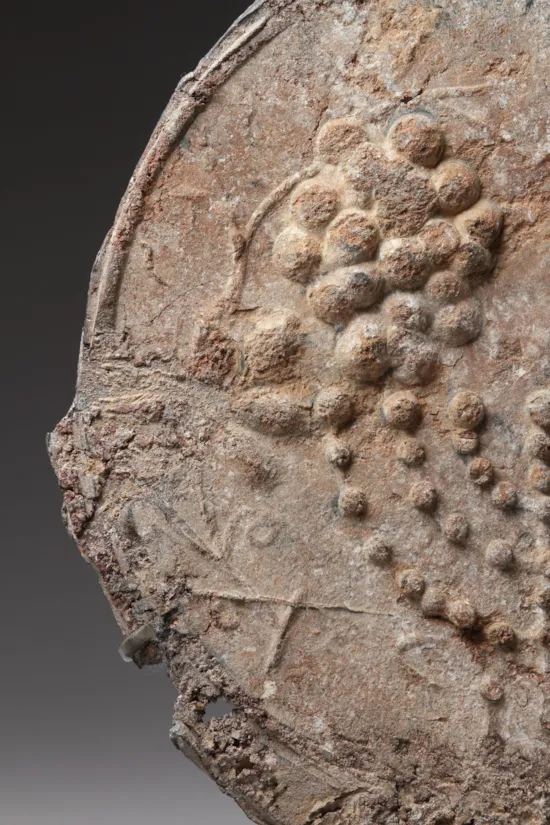

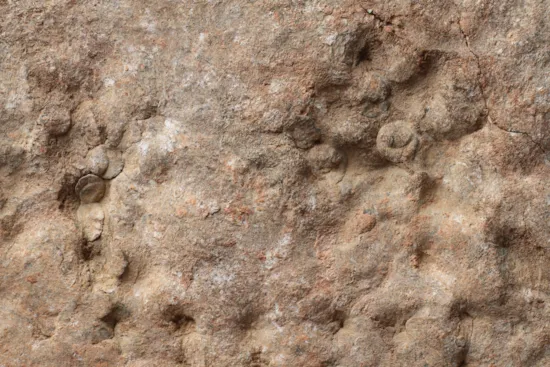
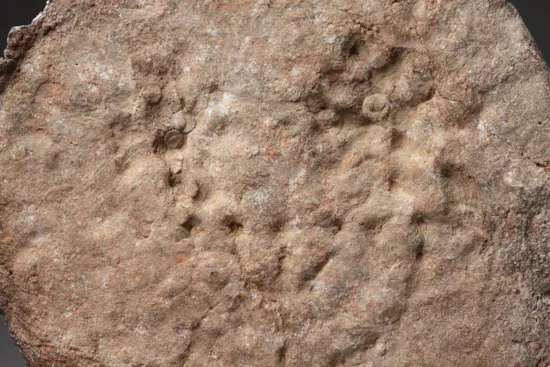
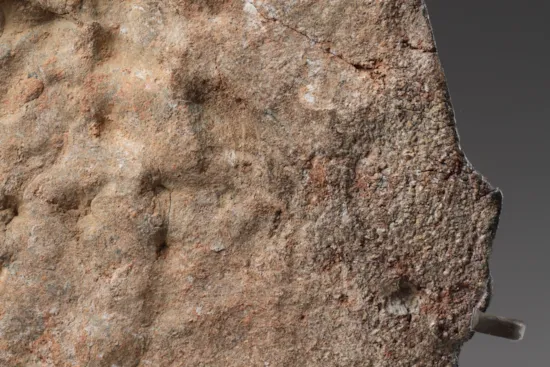
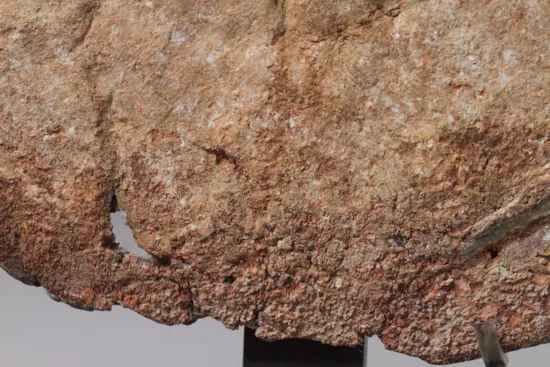












YOU MAY ALSO LIKE



